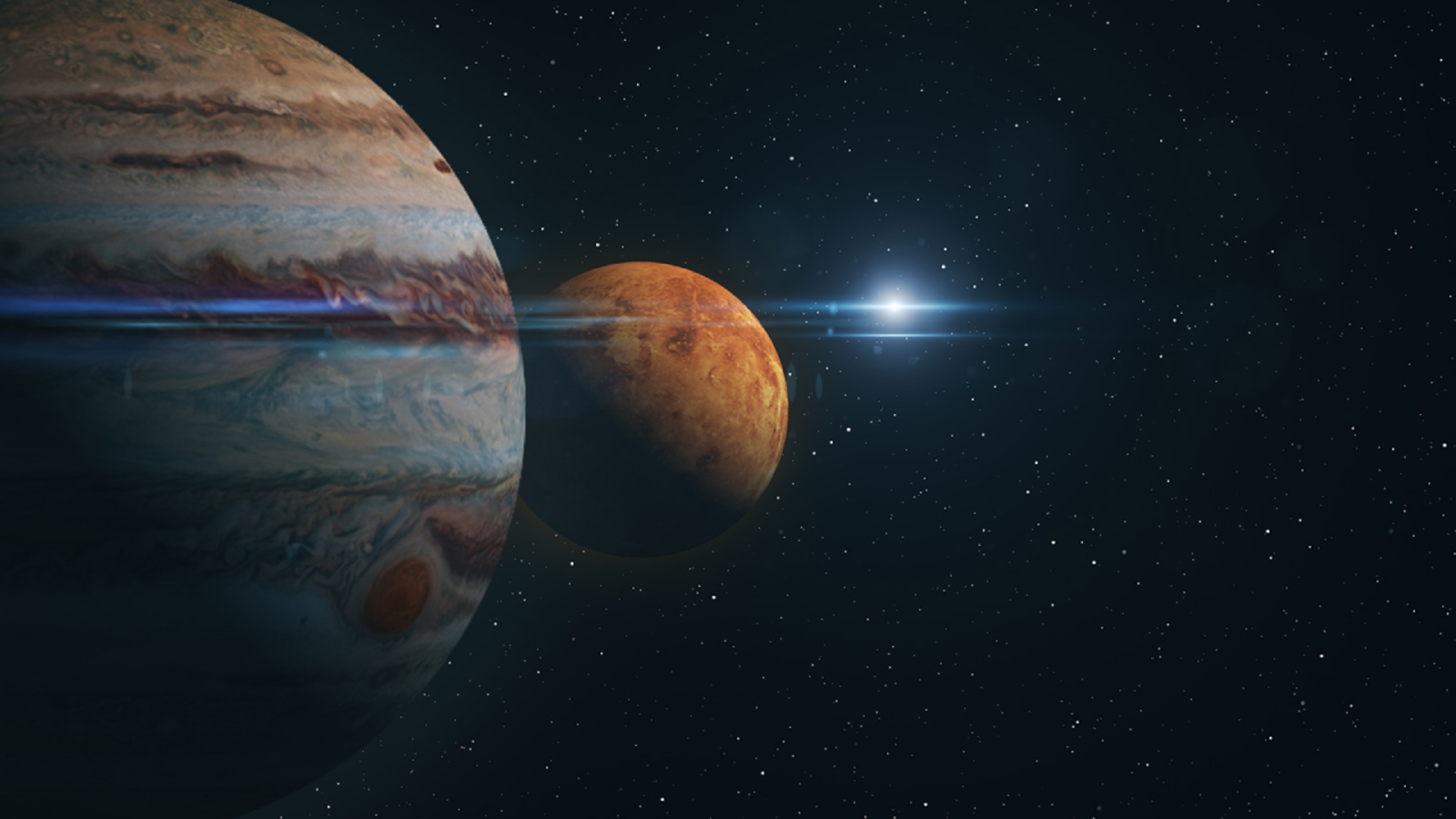
The vast expanse of the universe is filled with countless enigmatic celestial bodies that continue to captivate our imagination. From distant galaxies and dazzling stars to mysterious black holes and awe-inspiring nebulae, the cosmos is a treasure trove of secrets waiting to be unraveled. In this article, we will delve into the fascinating world of celestial bodies and explore nine intriguing facts that will leave you in awe of the wonders of the universe. Whether you’re a seasoned astronomy enthusiast or simply curious about the mysteries of space, prepare to embark on a cosmic journey that will expand your horizons and deepen your appreciation for the breathtaking celestial phenomena that surround us. So sit back, relax, and let’s explore the enigmatic realm of celestial bodies together!
Key Takeaways:
- The universe is full of mysterious celestial bodies, from the scorching Sun to the elusive dark matter, each holding its own secrets and captivating scientists and stargazers alike.
- Celestial bodies like black holes, neutron stars, and comets are enigmatic entities that continue to fascinate scientists and ignite our curiosity about the vastness of the cosmos.
The Sun is a dazzling star at the center of our solar system.
With its scorching temperatures and immense gravitational pull, the Sun remains one of the most mysterious celestial bodies in the universe. Its radiant light and energy are essential for supporting life on Earth.
Dark matter constitutes a significant portion of the universe.
Despite its substantial presence, dark matter is elusive and cannot be directly observed. Scientists believe that it plays a crucial role in shaping the structure of galaxies and the expansion of the universe.
Black holes possess a gravitational pull that is so strong, nothing can escape it.
These enigmatic cosmic entities form when massive stars collapse under their own gravity. They have such an intense gravitational field that not even light can escape, making them virtually invisible to direct observation.
Neutron stars are incredibly dense remnants of massive stars.
These cosmic powerhouses are formed through the supernova explosion of a massive star. Neutron stars are so dense that a teaspoon of their material would weigh billions of tons. They also have intense magnetic fields that produce powerful bursts of radiation.
Galaxies come in various shapes and sizes.
From spiral galaxies like our Milky Way to irregular and elliptical galaxies, these vast systems of stars, planets, and gas are captivating structures that continue to intrigue astronomers. Each galaxy holds its own unique mysteries and hidden secrets.
The moon influences Earth’s tides and provides breathtaking lunar eclipses.
As Earth’s only natural satellite, the moon has a significant impact on our planet. Its gravitational pull affects the ocean tides, creating the ebb and flow we witness along coastlines. Additionally, the moon’s alignment with the Earth and the Sun results in stunning celestial events such as lunar eclipses.
Comets are icy bodies that originate from the outer regions of the solar system.
These cosmic wanderers captivate both scientists and stargazers alike. Comets are composed of a mixture of ice, dust, and rock. As they approach the Sun, the heat causes them to develop a glowing coma and a magnificent tail, making them a spectacular sight in the night sky.
The magnetic fields of celestial bodies play a crucial role in their formation and behavior.
From the Earth’s protective magnetic shield to the chaotic magnetic fields of the Sun, these invisible forces significantly impact celestial bodies. They influence everything, from the formation of stars and planets to the behavior of solar flares and cosmic rays.
Some celestial bodies emit mysterious signals and phenomena, known as fast radio bursts.
Fast radio bursts are intense blasts of radio waves that last just a few milliseconds. The origin of these enigmatic signals remains uncertain, but they are believed to come from distant galaxies or possibly from highly magnetized neutron stars.
Conclusion
Exploring the vast and mysterious universe is a journey filled with awe and wonder. Celestial bodies, with their enigmatic nature, continue to fascinate and captivate us. From the breathtaking beauty of galaxies to the incredible power of black holes, these celestial objects hold countless secrets yet to be discovered.
By delving into the world of celestial bodies, we gain a deeper understanding of our place in the universe. Whether it’s pondering the origins of stars, contemplating the possibility of life beyond Earth, or marveling at the intricacies of planetary systems, studying celestial bodies ignites our curiosity and fuels scientific inquiry.
As we continue to unlock the mysteries of the cosmos, each new discovery brings us closer to unraveling the secrets that the celestial bodies hold. By exploring them, we unlock a deeper understanding of the universe’s complexity and beauty, and our place within it.
FAQs
1. What are celestial bodies?
Celestial bodies are objects in space that have their own physical properties and are subject to gravitational forces. This includes stars, planets, moons, asteroids, comets, and galaxies.
2. How are celestial bodies formed?
Celestial bodies are formed through various processes, such as the gravitational collapse of gas and dust, nuclear fusion in stars, or the collision and accretion of smaller objects.
3. Are there any other inhabited celestial bodies besides Earth?
As of now, there is no concrete evidence of life on any other celestial body. However, scientists continue to search for signs of life, particularly on Mars, moons of Jupiter and Saturn, and even distant exoplanets.
4. What is the biggest celestial body in our solar system?
The Sun is the largest celestial body in our solar system. It accounts for 99.86% of the total mass of the Solar System.
5. What is a black hole?
A black hole is a region in space where gravity is so strong that nothing, not even light, can escape its pull. They are formed from the remnants of massive stars that have undergone a supernova explosion.
6. Can celestial bodies collide?
Yes, celestial bodies can collide. Collisions between smaller objects can lead to the formation of moons or cause changes in the orbits of planets. However, large-scale collisions between celestial bodies are relatively rare.
7. How do scientists study celestial bodies?
Scientists study celestial bodies using various methods, including telescopes that capture different wavelengths of light, space probes that visit and study planets and moons up close, and computer models that simulate the behavior of celestial objects.
8. Can celestial bodies influence Earth’s climate?
Celestial bodies can have indirect effects on Earth’s climate. For example, the Moon’s gravitational pull affects ocean tides, and the Sun’s energy drives Earth’s climate system. Changes in solar activity and Earth’s orbital parameters can also influence long-term climate patterns.
9. What is the role of celestial bodies in astrology?
Astrology is based on the belief that the positions and movements of celestial bodies can influence human behavior and personality traits. However, astrology is not considered a scientific discipline and is not supported by empirical evidence.
Celestial bodies hold countless enigmas waiting to be unraveled. From the icy wonders of Europa Island to the mind-boggling facts about space dust, there's always more to explore. Kids can also satiate their curiosity by learning about the fascinating asteroid belt. Keep feeding your thirst for knowledge with these captivating articles that delve deeper into the mysteries of our universe.
Was this page helpful?
Our commitment to delivering trustworthy and engaging content is at the heart of what we do. Each fact on our site is contributed by real users like you, bringing a wealth of diverse insights and information. To ensure the highest standards of accuracy and reliability, our dedicated editors meticulously review each submission. This process guarantees that the facts we share are not only fascinating but also credible. Trust in our commitment to quality and authenticity as you explore and learn with us.


